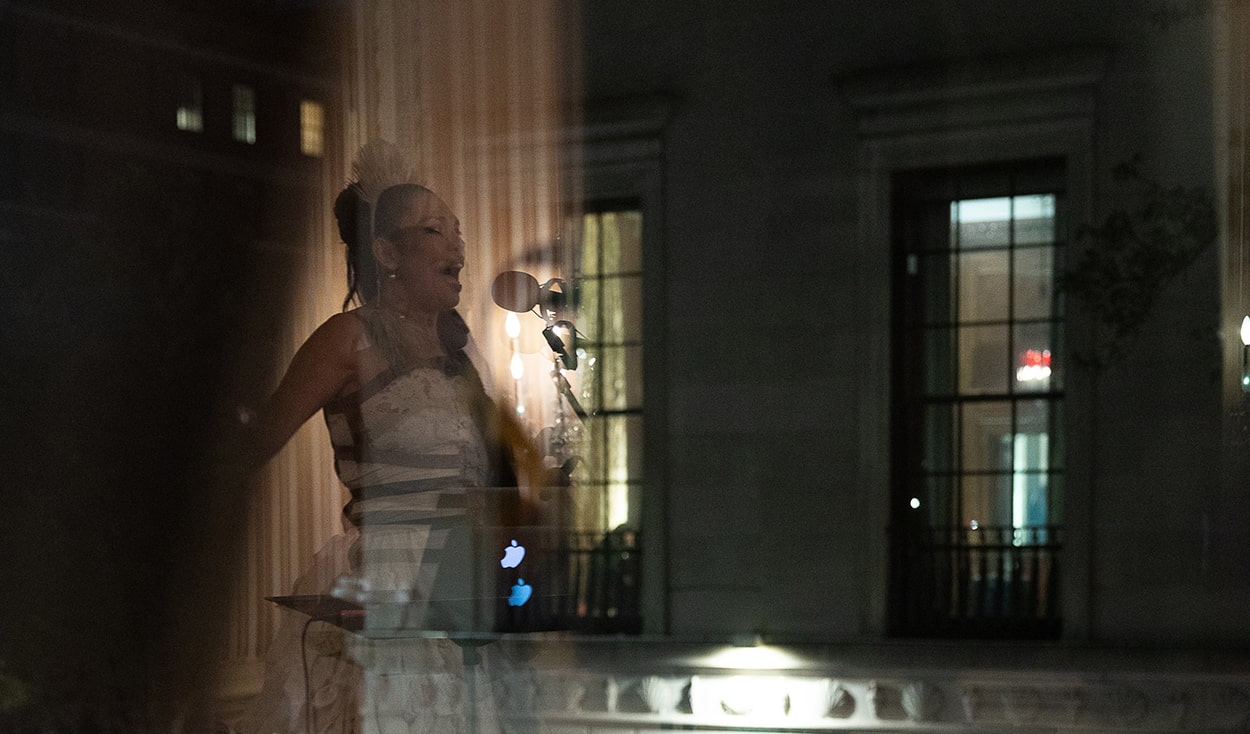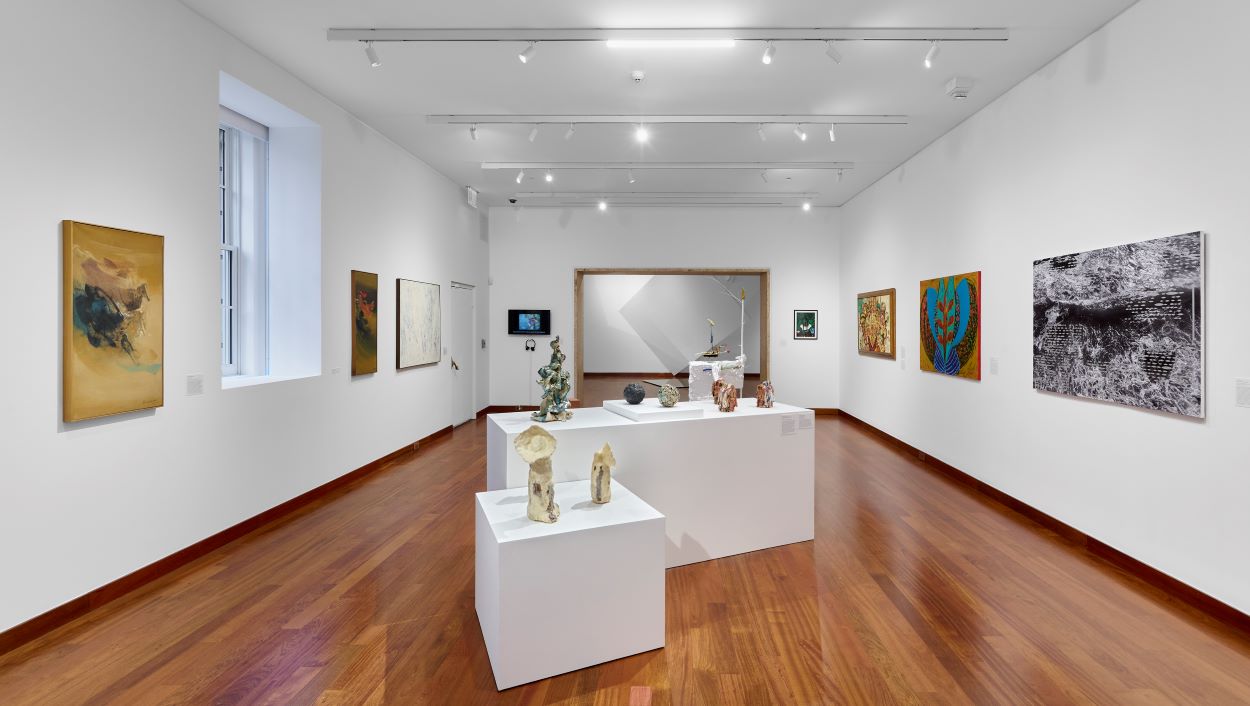Interview: Pola Oloixarac on a New Opera at Teatro Colón
Interview: Pola Oloixarac on a New Opera at Teatro Colón
Music of the Americas gets an inside look at Centro de Experimentación del Teatro Colón's production process.
Earlier this summer, Music of the Americas explored the ongoing collaboration between the Teatro Colón and the Americas Society. In the last year, Americas Society expanded its relationship with the Colón, one of the leading opera houses in the Western Hemisphere, by initiating a partnership with the Centro de Experimentación del Teatro Colón (CETC). Through the CETC, the Colón is able to establish an environment in which composers can create, audiences can get to know new works, and musicians can enjoy the challenges of premiering them. Music of the Americas had the unique opportunity to learn about the process of production for a new opera, Hercules en el Matto Grosso, due to have its premiere later this fall in Buenos Aires and its U.S. premiere at Americas Society in Spring 2015. Americas Society's Martha Cargo speaks with the opera's librettist Pola Oloixarac.
Background on the Work
Hercules en el Matto Grosso centers on Hércules Florence, the French-Brazilian painter and inventor who traveled with Baron von Langsdorff into the jungles of Brazil's Mato Grosso in the late 1820s. The opera follows the journey of these two men as they venture into the Amazon, where they are confronted by two anaconda snakes, who are water gods. Seduced by the anacondas, Langsdorff loses his mind, infected by fever. From the detailed journals that Hércules kept, we see that he completed his first experiments fixing images with a camera obscura, coining the term "photo-graphia" (painting with light). Oloixarac developed this story as a research assistant to the Department of Romance Languages at the Harvard libraries, and this past February completed her research and libretto at Stanford University. The cast features baritone Alejandro Spies in one of the leading roles (Watch his 2013 ISATC debut at Americas Society here).
The majority of the libretto is in Portuguese, with several German lieder, sung by Langsdorff, as well as some passages in Quechua, sung by the anacondas. The work is scored for two pianos, four singers, and electronics.
Music of the Americas: How did the inclusion of Quechua come up in your research? Is it connected to Amazon legends of these water gods?
Pola Oloixarac: Monsters, and the monstrous, are important categories in Brazilian culture—from the classic Macunaíma by Mário de Andrade, to legends and architectural brutalism. The Anacondas, our goddesses of the rivers, speak mostly Quechua, and some Portuguese. They speak backwards too.
Water deities play an overpowering role in Amazonian legends. The Runa Simi, or Quechua, has been an underground system for centuries, spanning across Peru, Bolivia, Argentina, and parts of Amazonian Brazil. Runa Simi means the language of the people. They were not allowed to speak it—it was frowned upon by the “civilized,” yet it survived the Spanish and the Portuguese waves. Other languages are spoken in the Brazilian forests too, but the available grammars are too few. There’s a special beauty to Runa Simi. Many sounds are borrowed from nature, with words imitating, for example, the clash of water and matter. And its syntax is in fact much closer to Latin and Germanic tongues than to the modern Romance languages, which makes for a much more technical, clinical language.
Music of the Americas: Is there a conflict between the characters, in respect to language? Does the Baron understand what is being communicated to him by the snakes only in his dream-fever?
Oloixarac: The Baron speaks in Portuguese with Hercules, but sometimes his mind elopes, and he bursts into his Muttersprache, German. There’s a small cycle of German lieder inside the opera, the Baron’s little Winterreise in the jungle. He’s losing his mind and has epiphanies of a world that can’t be seen. So yes, I think in a way he understands what the Anacondas are singing, and that’s why he goes mad.
Music of the Americas: How has the collaboration developed? Did your research come first, then the art, then the music, or everything together?
Oloixarac: I stumbled upon the diaries and inventions of Hercules Florence when I was in Boston researching a novel on explorers in Brazil. My native instinct was to make Hercules into a novel, but I struggled, I couldn’t find the language for it. Then I realized that opera was the language Hercules was asking for, and, when I returned to Buenos Aires, I called my friend the composer Esteban Insinger. We started working on the opera immediately.
We were lucky to have Miguel Galperín’s trust, voice and ear from early on. Making the opera site–specific for the CETC at the Teatro Colón was an inspiration in itself. How to conjure a Mato Grosso out of this blackness? We were fascinated by Luna Paiva’s luscious jungle dioramas, so we invited her to do the scenography. And we invited Walter Jakob to do the régie. Walter has a great taste for humor, he’s awfully melomaniac (he owns over 2500 vinyl records), so his interpretation of the musical libretto is very joyous.
Music of the Americas: What do the sets look like so far? Are there sketches?
Oloixarac: We have beautiful gouaches by Luna Paiva revisiting the species painted by Hércules Florence.








